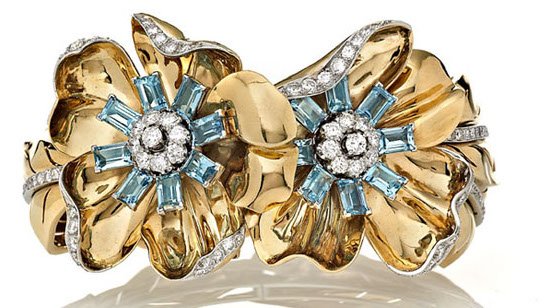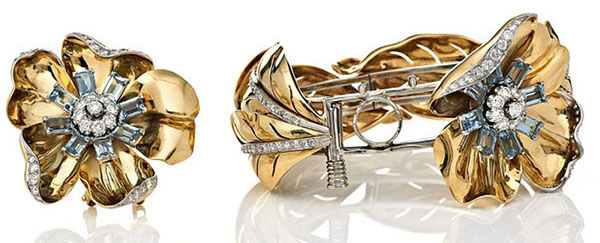Antique Week in New York City
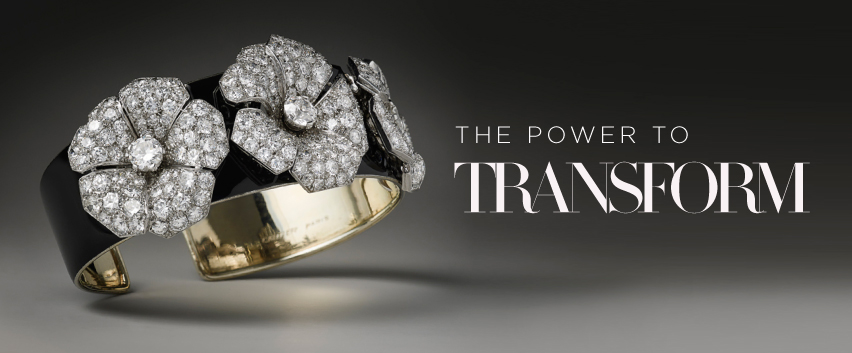

James Robinson also had an equally finely crafted floral enameled cuff bangle, circa 1870.
January in New York: it’s cold, dreary, gets dark way to early and we tend to layer more in sweaters and scarves than jewelry—but there is one week that always puts a smile on my face—when The Winter Antiques Show at the Park Avenue Armory comes to town.
Sure, I will be in Miami for the antique shows in a few weeks and I am looking forward to going on the hunt (in a warm climate) to bring you some of the best of the jewels that these shows have to offer. But in the meantime—The Winter Antiques Show is definitely a way to beat the big chill and winter doldrums. Along with exhibitors who display various decorative arts, this show features a small group of well-know retailers from London and New York with museum quality antique through vintage pieces.
If you are in or around Manhattan through January 29th, here are a few themes/jewels you might want to pop around and see in person:
Jewels With Transformative Powers
I am always ecstatic to see convertible pieces. What women wouldn’t want purchase one jewel that could be adapted in multiple styles? The jewelers during the 18th through 19th centuries were savvy enough to understand this concept and designed pieces or suites that women could adjust to wear in diverse ways. They created fittings that would transform the jewels–a necklace into a diadem or multiple brooches, for example. We saw this again during mid-century in the post-war fifties. After jewelers had worked with limited materials, they became more and more creative with stone choices and creating interchangeable pieces.
At Wartski, I found quite a few of these multi-wear jewels, from different time periods.
Journalistic objectivity went out the window when I spotted the Lacloche bracelet, spun out of platinum to replicate the most delicate of petit point lace motifs. Katherine Purcell explains, “this jewel is a prodigious example of the goldsmith’s art. Created in platinum and diamonds, the ingenious mounting technique is in the style of the famous Mosaic Imperial Easter egg by Carl Faberge.
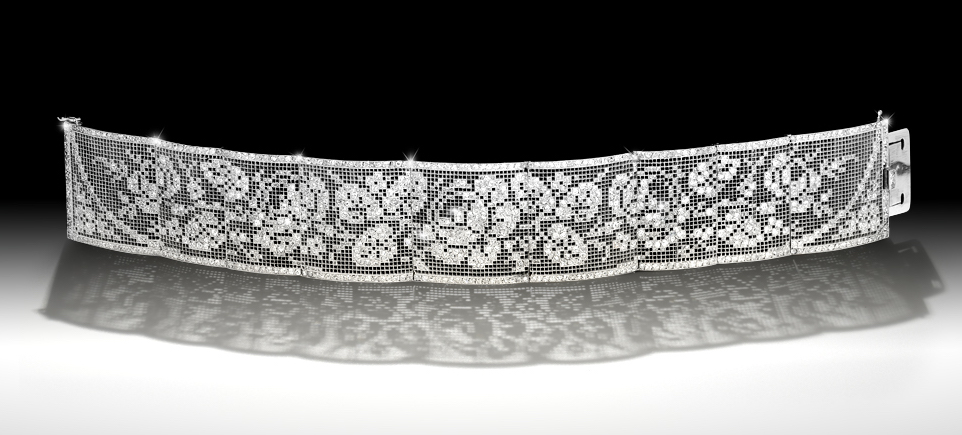
But… wait. There is more. The bracelet transforms into a necklace. There is a platinum extension chain with diamond sections, allowing it to be worn as a choker, Paris, circa 1910. It is housed in it’s original silk and velvet lined fitted leather box.
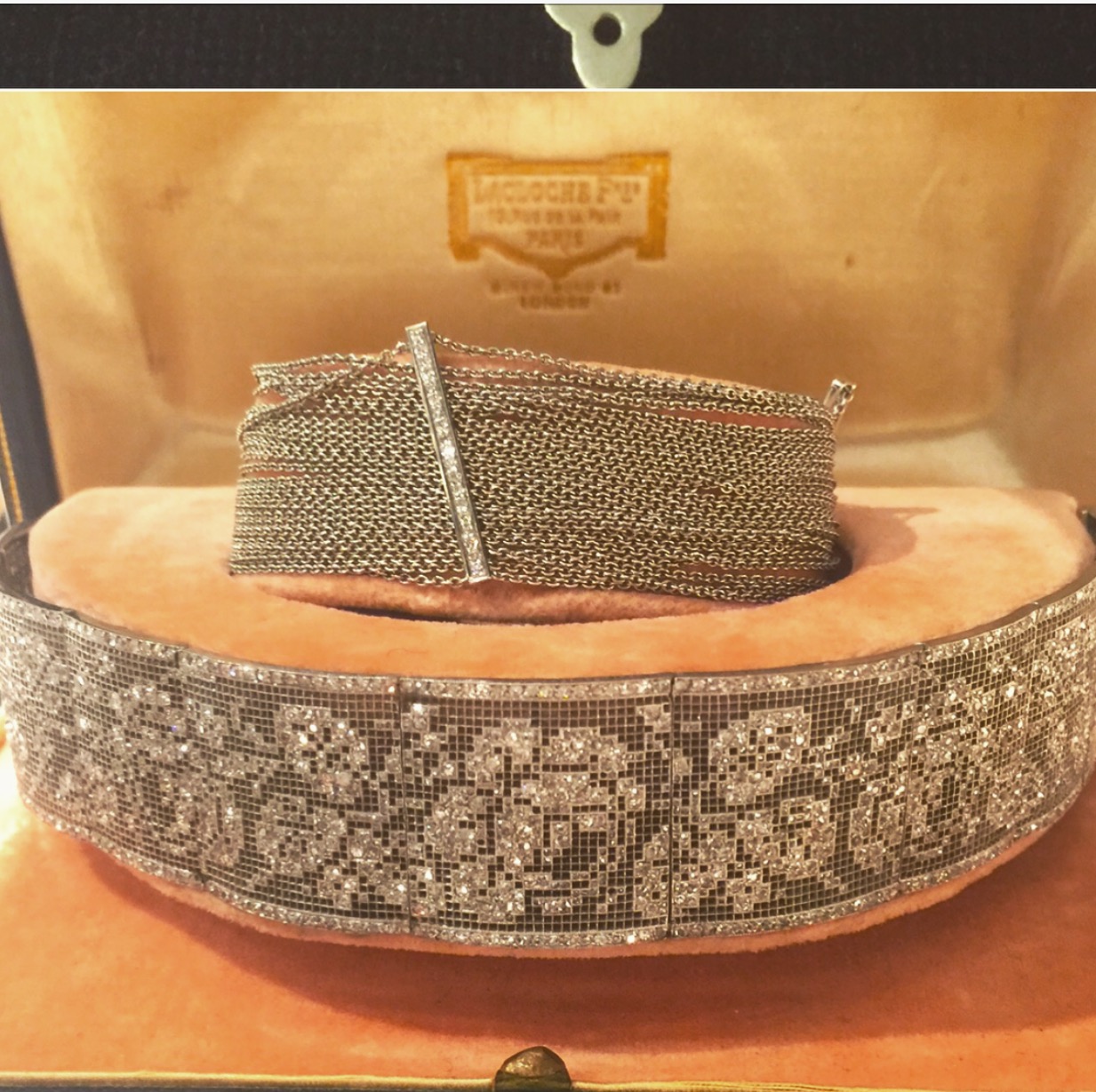
Another one of my favorite transformative pieces at Wartski is from Cartier, Paris. It reminds me of the Cartier brooches that Merle Oberon received as a wedding gift from her husband Alexander Khorda, three clips that were worn as a necklace on a cord, and as separate clips in her hair. She not only wore it in real life but also in the film Until We Meet Again. Wartski’s version features each of the three flowers centered by a round brilliant cut diamond encircled by pave set diamond petals, mounted on a ‘grey gold ‘ bangle enameled opaque black. The flowers detach from the bangle and have hinged fittings allowing them to be worn as brooches. I am also sure one can figure out how to wear them in the hair. Versatility at its finest.
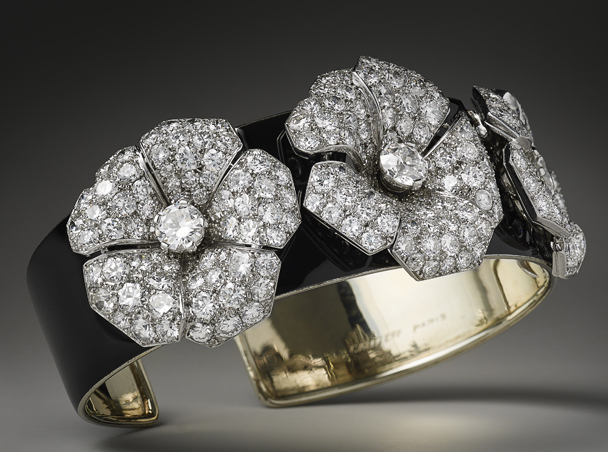
And then if we fast-forward to 1950, Paul Flato creatively devised this bold gold floral bracelet with aquamarine and diamond and a fitting that allows one of the flowers to be detached and turned into a brooch.
Brooches and Pendants Reign
One can’t leave Wartski without spotting a piece or two or three of royal provenance. At this show I spotted two, one of the Faberge brooches was the property of the Dowager Tsarina Marie Feodorovna and was purchased on 18th March 1911 for 190 roubles. It is set with Siberian aquamarines.

There are also those things you don’t see everyday like a gift of a gem set and pearl pendant with a handwritten note from Her late Majesty Queen Alexandra to one of her closes friends who is referred to as Gladys in the note. It is Lady de Grey, Marchioness of Rippon,who was responsible for bringing the Ballets Russes to London.
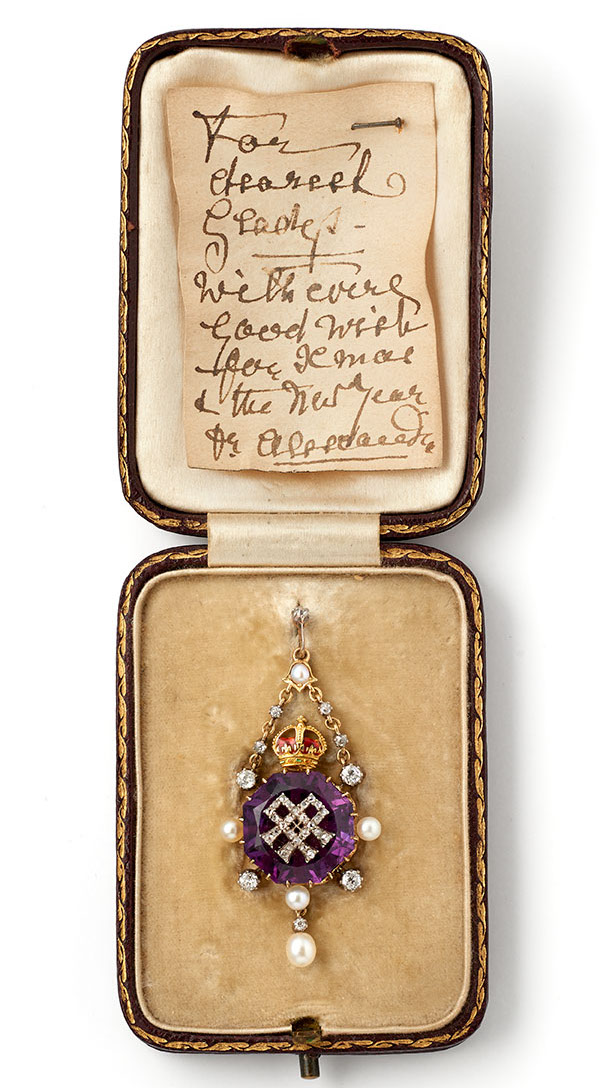
Brace Yourself for bracelets from every time period at Kentshire. The mix of flexible and hard cuffs is a dream come true for collectors interested in multiple eras in jewelry. Kentshire’s brother and sister duo, Carrie and Matthew Imberman display exquisite taste and style and always display a comprehensive selections of Georgian through Vintage jewelry . This is not an easy feat in a time when repros are rampant and rare jewels in the quality that Kenthsire offers is becoming more and more difficult to find.
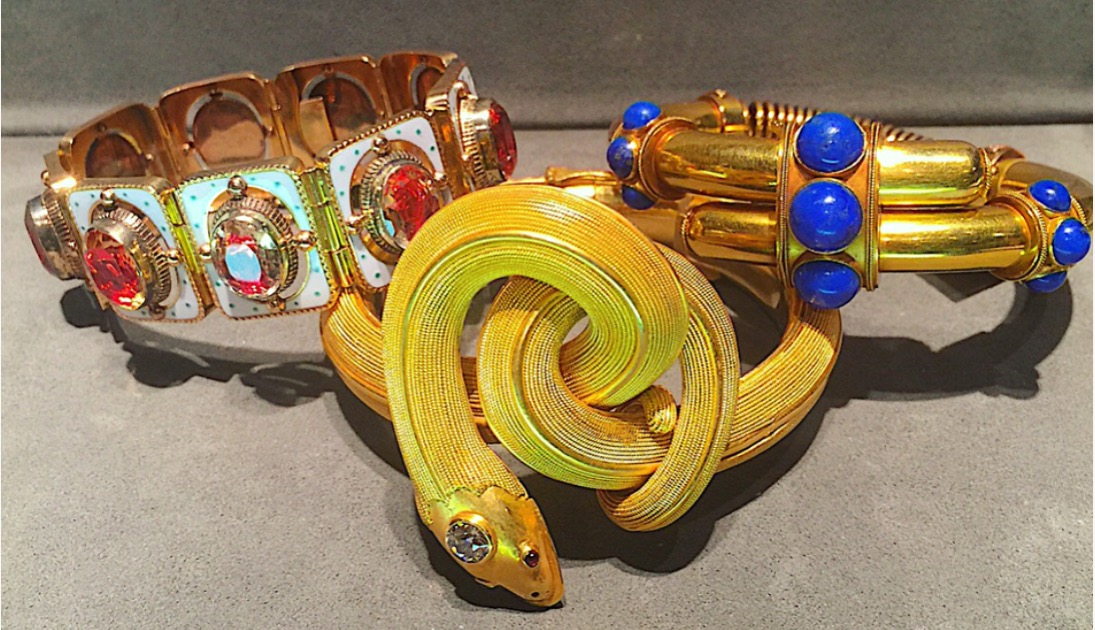
From left to right: Antique gold and white enamel bracelet, France circa 1840, Snake bracelet with diamond eye in yellow gold, Victorian gold and lapis bypass bracelet.
Moving Parts
This early 19th century French diamond spray en-tremblant brooch in silver on top of gold is set with rubies and emeralds in the center of the flowers is from A La Vieille Russie. This one bouquet I would love to receive for upcoming Valentine’s Day.
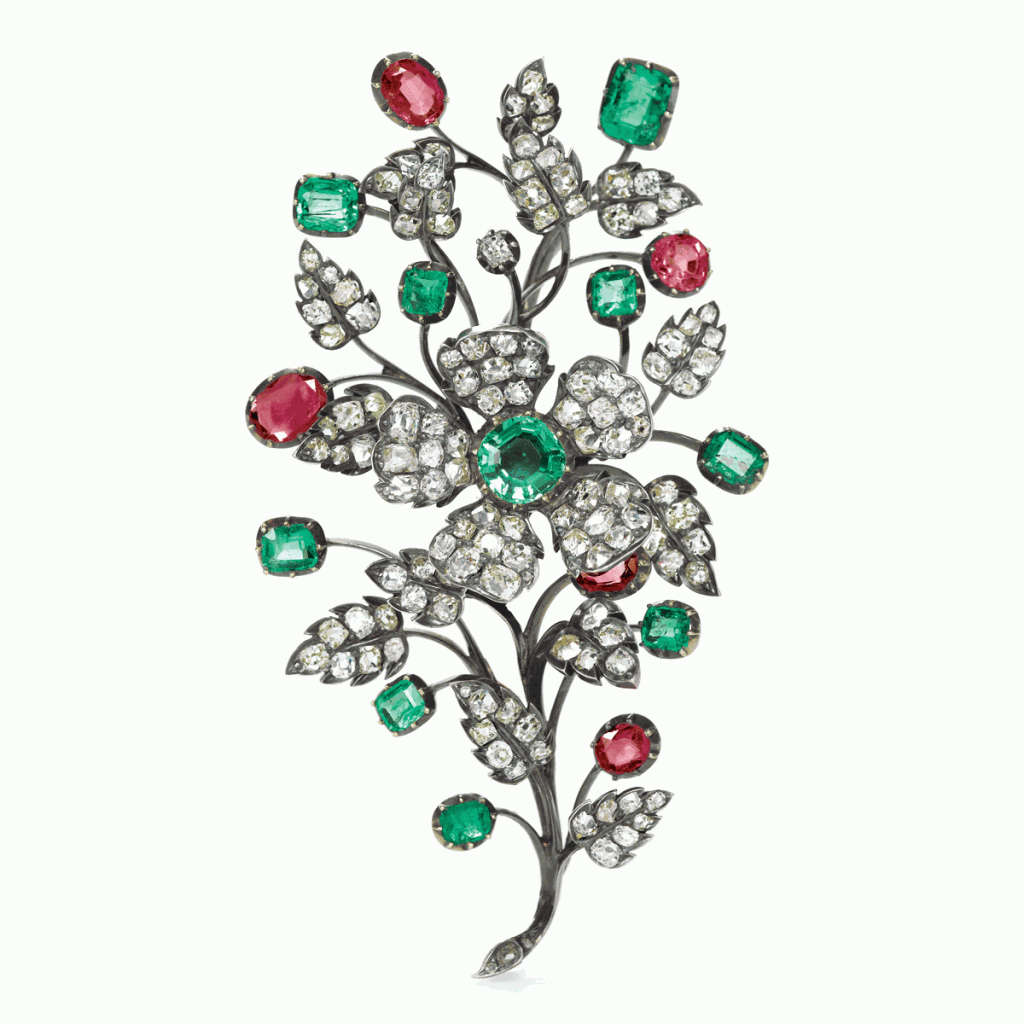
Color me Beautiful
That’s exactly how I felt when I walked into James Robinson’s space at the show. Necklaces crafted from vibrant gemstones, enamel and buttery gold with the most intricate of cannetille work are statement making without being overpowering. They work with everything, yes everything in your modern wardrobe. And, moreover they are collectible, rare and in extraordinary condition. These are the type of necklaces you want to snap up when you find them—before someone else does.
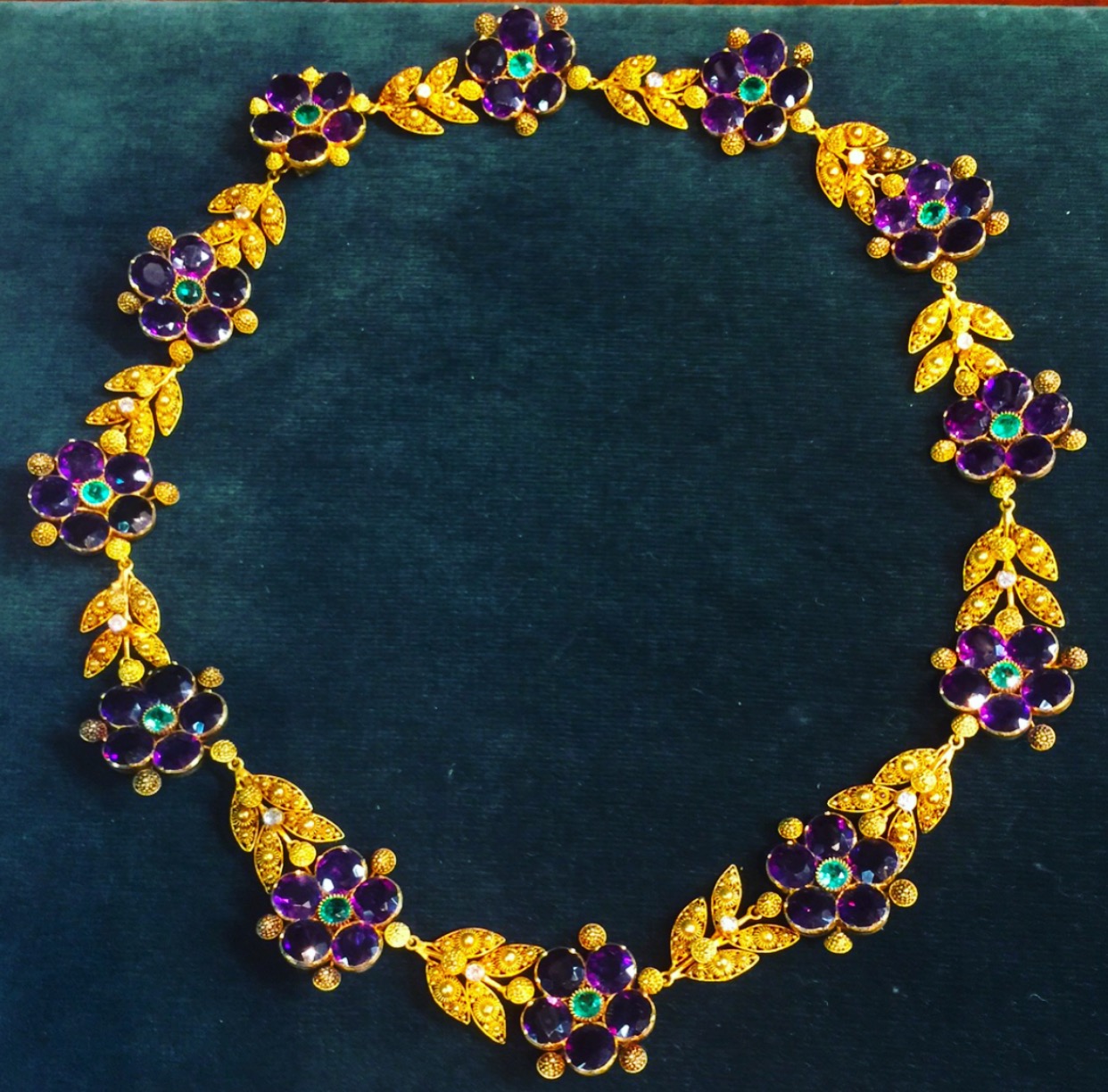
The amethyst pansies with cannetille work is circa 1850

and the enamel and gemstone alternating small and large stations is circa 1880.
Going Green
Contemporary jewels are not the only pieces that can follow the 2017 Pantone color of the year: Greenery. This also works for antique pieces, which will endure beyond the trends. We see green gemstones it in all time periods at Macklowe Gallery from a Victorian five stone peridot and diamond ring to a dematoid garnets with diamonds and other stones in insect motifs from the Art Nouveau period and a oval cabochon Art Deco Tiffany & Co. peridot and enamel ring, circa 1913. Mixing up time periods and more geometric and structured with fluid pieces all works when you are tying it together in a color story—so go ahead and experiment and find your own way of going green.

As an added bonus last week, The Big Flea came to New York City and was held from Thursday 19th through Sunday 22nd. Here are some pieces that stood out in the show:
Glorious Antique Jewelry
-The gold work on Etruscan revival beads and a pair of intricate gold work Victorian acorn earrings.

Jacob Estate Jewelers
-Flexible Georgian period gold mesh choker with cannetille work an pink topaz

Lowther Antiques
-A grouping of Georgian motifs from the garden from flowers to butterflies, with gem set pansy rings and brooches that in French (pensee) mean ‘think’ and in the language of flowers translates into ‘think of me’. Here again, we see the detailed cannetille work we have been seeing on jewels throughout both shows.
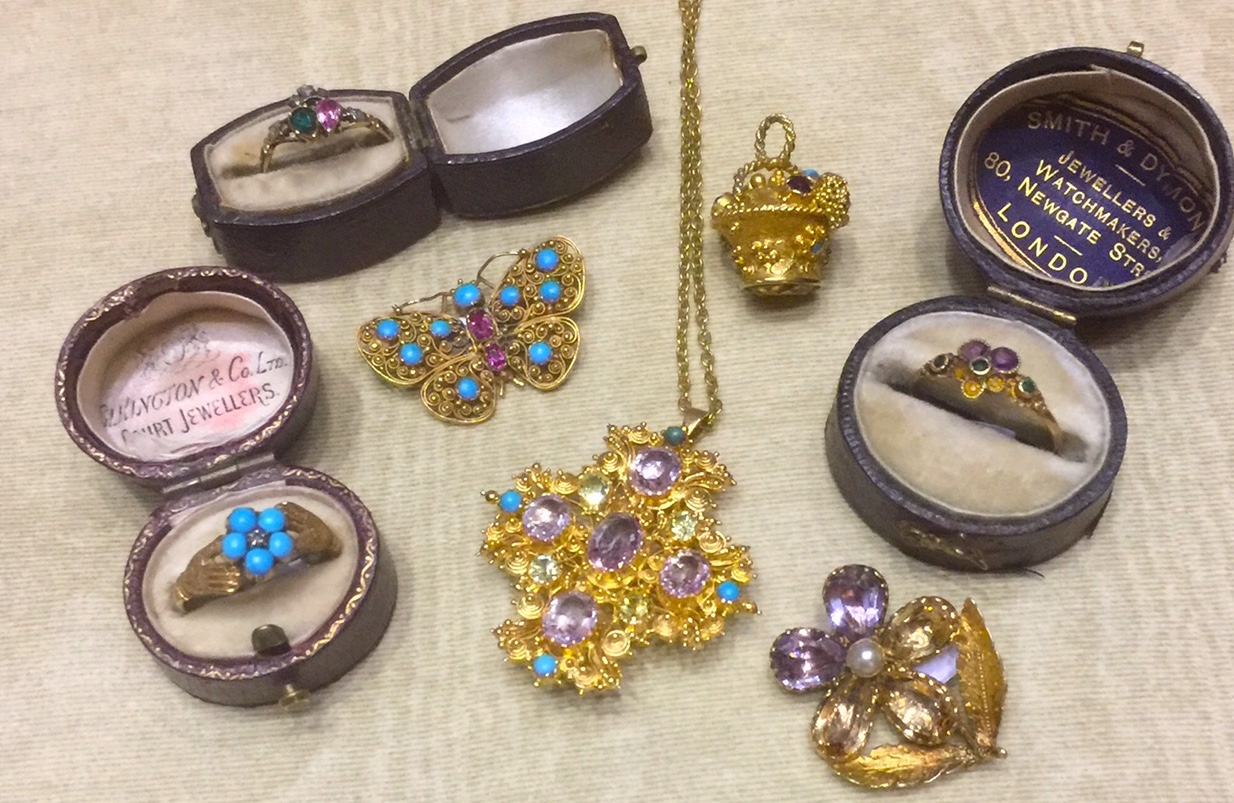
Malcolm McGrueter
-Memorial and Georgian rings that are replete with the character of sharing their previous owner’s lives for over 300 years. The pieces do look like they were just found in a treasure chest and that is the charm for the die hard collector.

Roy Rover
Although Roy Rover is a one stop shopping experience for every time period, price point, gemstone and dimension from delicate to ultra bold— at this show I was enamored and couldn’t drag myself away from these Victorian wings in gold, set with seed pearls. They rest on the ears the way in which the modern ear climbers do. And, although the original clip backs were changed, these earrings are chic, hip yet transcend the trendiness of their contemporary counterparts and will continue to be a timeless and enduring style.


